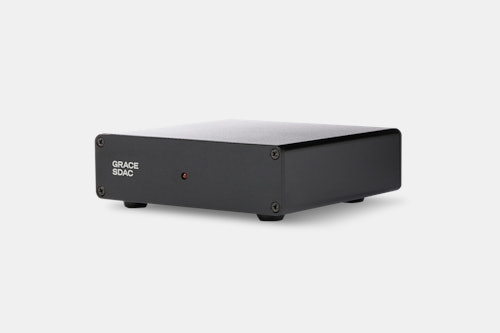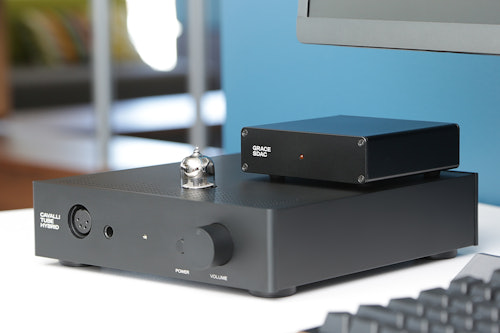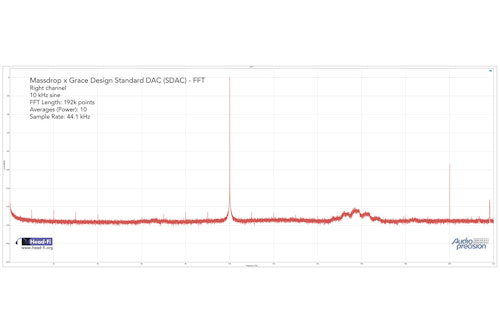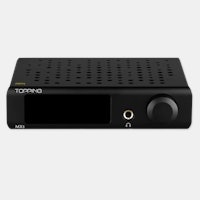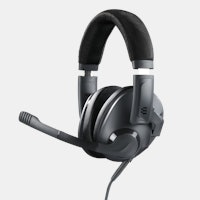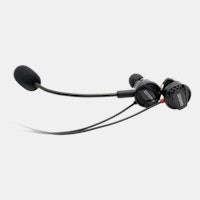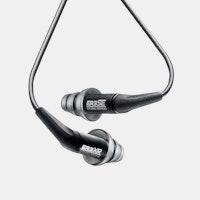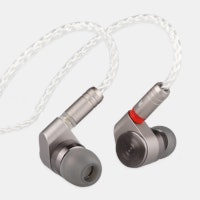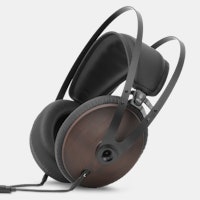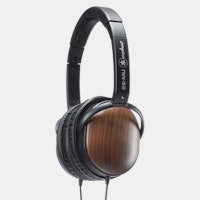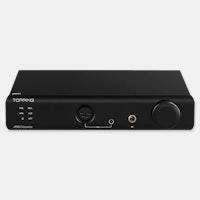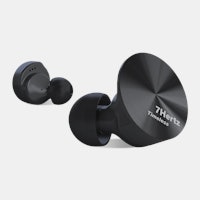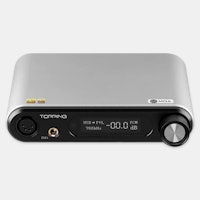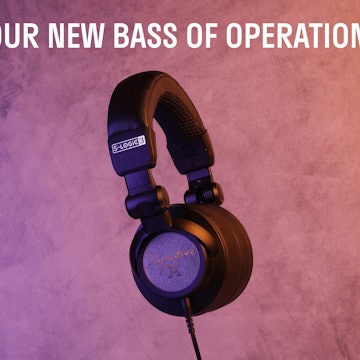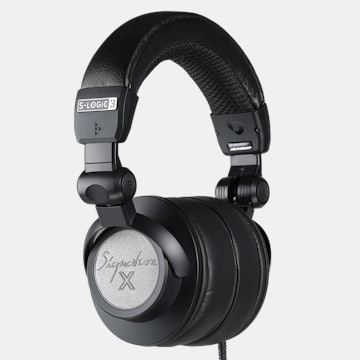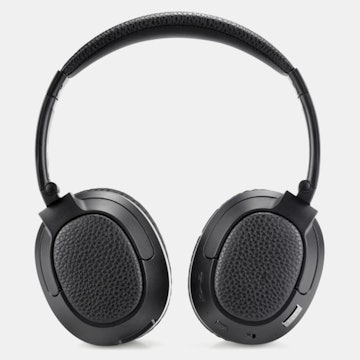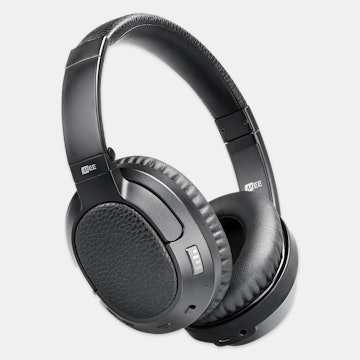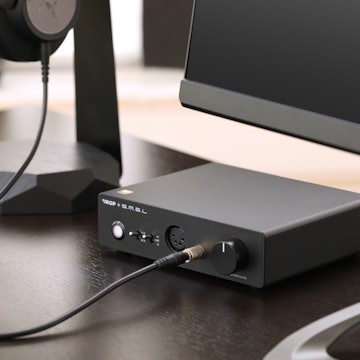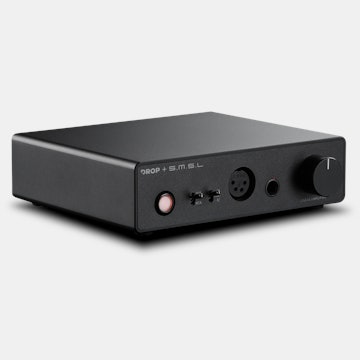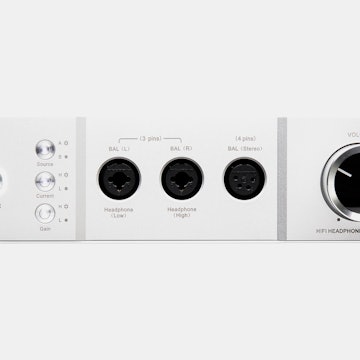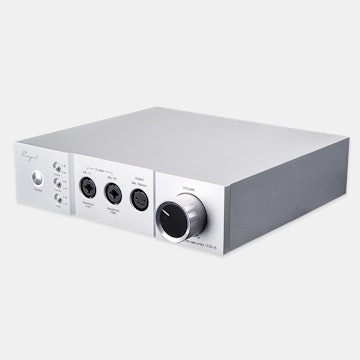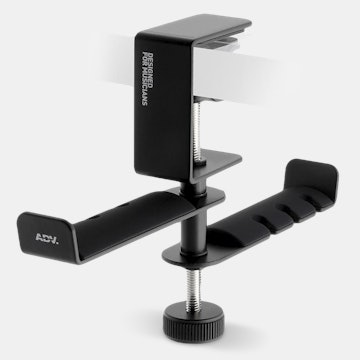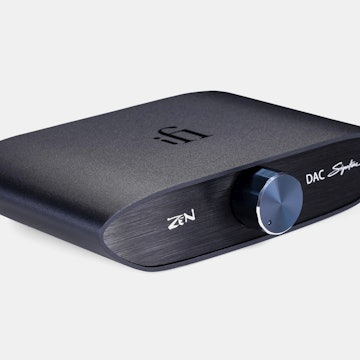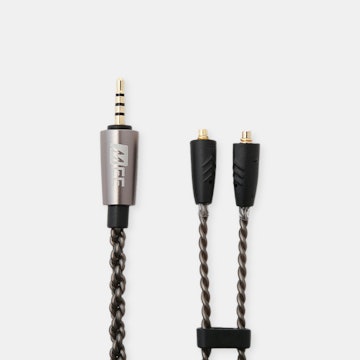Click to view our Accessibility Statement or contact us with accessibility-related questions











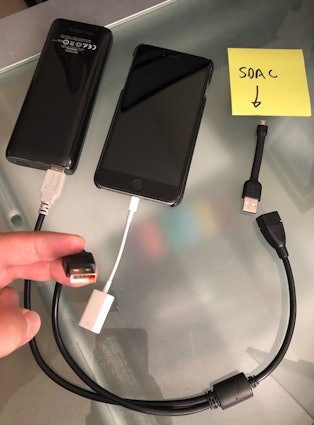










Massdrop x Grace Design Standard DAC
Massdrop x Grace Design Standard DAC
bookmark_border
Where's the price?
To negotiate the best possible price for our customers, we agree to hide prices prior to logging in.
6K requests
·
Free Returns in USA
Product Description
Made in collaboration with Grace Design, a company known for its incredibly accurate, transparent studio gear, the Standard DAC sets a new standard in entry-level DACs. It applies Grace Design’s pro-audio expertise to a simpler, more accessibly priced model that makes a great addition to any home or office system Read More

search
close
Sort by: Top Conversations
keyboard_arrow_down
Michael_Grace
432
Grace Design
Sep 7, 2017
Hi All,
I thought I would provide some technical details about the SDAC design that are not evident by reading the specifications.
When Massdrop approached us to design a USB DAC that could provide equal or better performance than the ODAC Rev B or Schitt Modi 2, but be more affordable than our m9XX, we jumped at the challenge. The SDAC contains mostly new circuitry for us and there was not much we could reuse from previous products we have built in the past.
Successful DAC design begins with the understanding that a DAC chip is in essence a mixer. The output from a DAC is a mix of four primary inputs: 1) Digital audio data 2) Clock Jitter 3) Power supply noise 4) Analog circuit distortion.
Modern delta-sigma DACs have vanishingly low noise and distortion so the "sound" of a DAC is really less controlled by the actual IC selected for the design and more by the quality of the clock, power supply, and analog amplifiers. Also, to a lesser but significant degree, passive components like capacitors and resistors in the analog signal path.
The SDAC employs asynchronous data transfer from the USB host, which allows for the use of fixed crystal oscillators rather than phase locked loops (PLLs) or digital clock synthesis. A low noise fixed crystal oscillator is the lowest jitter sample clock and there are two in the SDAC: One 22.5792MHz crystal for 44.1kHz and 88.2kHz sample rates, and one 24.576MHz crystal for 48kHz and 96kHz sample rates. These are located very close to the DAC.
I should note that asynchronous mode allows for the use of a high quality clock but it is not intrinsically better. It is certainly possible that there asynchronous designs out there that use low grade clocks and therefore are not benefiting from asynchronous mode.
The power supply for the DAC is designed for very low noise and good noise rejection. This is critical to the overall performance and is not easy to do given the constraints of USB bus power operation. There are separate voltage regulators for the DAC, processor, and analog circuits, which minimizes interaction between these circuit areas.
The analog output circuits are based on very low noise and low distortion amplifiers. With harmonic distortion below -120dB, they are well below the distortion floor of the DAC.
The SDAC is direct coupled with no capacitors in the signal path, which gives low frequency response that is perfectly flat and free of phase shift.
Following is a list of some of the technical features of the SDAC:

- XMOS X200 USB streaming controller operating in asynchronous transfer mode.
- IDT XLH series oscillators provide and exceptionally stable and low noise sample clock for DAC. 12kHz to 20MHz phase jitter is 750fs. Note that the jitter below 12kHz is generally more important in audio applications but the 12kHz-20MHz specification is commonly used for specifying oscillators so it is useful in comparing to other clocks. In the SDAC the clock jitter artifacts are well below the DAC noise floor so they are essentially irrelevant.
- AK4452 DAC provides 32 bit internal processing , 115dB dynamic range, and the same architecture as the AK4490.
- Output amplifiers are Burr Brown OPA1652. These are extremely low noise low distortion FET input amplifiers with excellent output cable drive capability. Note that the output impedance is set at 150 Ohms so the SDAC is not intended to drive headphones. While it will not harm anything to do so, the fidelity will not approach what is possible with a good headphone amplifier.
- The negative audio power supply is generated with a switched capacitor circuit that operates synchronously to the audio sample rate to eliminate any possibility of power supply related spurs in the output spectrum.
- DAC power supply is regulated with the TPS793 low noise linear regulator to reject any contamination from noisy USB power.
- 4 layer FR-4 circuit board with careful attention to high speed digital layout, power supply grounding, and low noise analog signal routing.


Michael_Grace
432
Grace Design
May 13, 2021
Do you have another USB cable you can try? Or try plugging in to another computer? This will help narrow down where the problem is.
Shishkebabs
1
May 18, 2021
Michael_GraceHmm its working now, i got a toslink cable and used the other input instead. I think the thunder storm the other day did something to the USB (made it cant receive data?)

Twerk02
42
Sep 3, 2017
Oh look yay, yet another freaking USB DAC trying to enter the market. Am I supposed to act excited or what?

Twerk02
42
Sep 8, 2017
I agree with everything Ken Rockwell says in his review of IPHONE 5 sound quality. Please see introduction section and summary section at the end.
Specifically, he says, "the iPhone 5 is a wonderful high-fidelity audio source. While publications funded mostly by advertisements from makers of expensive cables, power conditioners and outboard DACs don't want you to know this, the iPhone 5 is a better audio source than most DACs will be when connected to a computer or CD transport."
http://www.kenrockwell.com/apple/iphone-5/audio-quality.htm
Apple's audio products sound fantastic. On head-fi, someone made a thread that he couldn't tell any difference between a CHORD HUGO and an Iphone headphone output, which says it all.
Specifically, he says, "the iPhone 5 is a wonderful high-fidelity audio source. While publications funded mostly by advertisements from makers of expensive cables, power conditioners and outboard DACs don't want you to know this, the iPhone 5 is a better audio source than most DACs will be when connected to a computer or CD transport."
http://www.kenrockwell.com/apple/iphone-5/audio-quality.htm
Apple's audio products sound fantastic. On head-fi, someone made a thread that he couldn't tell any difference between a CHORD HUGO and an Iphone headphone output, which says it all.

cspirou
220
Oct 3, 2017
Funny part is that new Macbooks and iPhones don't even have an audio output anymore.

PigmonkeY
1082
Sep 7, 2017
I kind of want to buy some cheap IEM's and see if i can get them to set on fire with the 40w per channel from the NFB 11.28 :D
madmax69
0
Sep 10, 2017
what do you thinl ill pay extra on customs,is that a problem with price drop ?regards mk

Budd
35
Sep 2, 2017
Audiophiles don't buy anything unless they can see the inside, how it's made, the guts, so to speak. Please post pictures of the inside PCB.

Michael_Grace
432
Grace Design
Sep 2, 2017
Hi All, I just wanted to comment on the choice of the micro B USB connector for the SDAC. While I will be the first to admit the that micro B connector is probably the most annoying to plug and unplug because of its size, that is really where the disadvantages end.
The micro B connector was designed specifically as an upgrade to the mini B and has better performance in almost every way to the mini B. First off it is designed for 10,000 plug/unplug operations. (mini B is 5000) It's contact resistance is specified to be <30 mOhms (mini B is <50 mOhms) It is designed such that the cable plug wears faster than the jack. It is easy to replace a worn out cable but not a circuit board mounted jack. It is ubiquitous. Ans so are micro B USB cables.
There is a really good reason why most cell phones in the world use this connector. (Of course it is very unlikely that anyone will ever unplug and plug the cable in the SDAC as often as they do a with cell phone.)
As for USB C, that is beyond the scope of this product, which is a USB audio class 1 complaint device, and would have significantly increased the cost.
Cheers, Michael

CEE_TEE
3480
May 24, 2019


GUTB
238
Sep 5, 2017
Another highly questionable DAC. At this price point, it's almost certainly based on some Chinese DIY board. I'm sure Grace did some code optimization and/or other tweeks.
Not a real DAC. Better than a cheap motherboard's built in DAC/amp circuit, but that's pretty much it.
Not a real DAC. Better than a cheap motherboard's built in DAC/amp circuit, but that's pretty much it.

SusanoO
25
Keyboard Club Member
Sep 24, 2017
Hi all Massdroppers,
Does anyone know how this would work with the newly released Magni 3 from Schiit? I am hesitating between that and the Massdrop O2 AMP+SDAC combo, or even the Topping D30+A30 combo also found here. I am pretty new to the Mid-fi community and would like some advice based on my sound preferences and my current and upcoming gear. So far I have some portable gear, including the Topping NX1s to run with my Samsung Galaxy S7 Edge, as well as the Cayin C5 (DAC/AMP version) paired with a Cayin N3 DAP. My headphones include a Philips Fidelio L1, Shure SRH750DJ, Beyerdynamic DT1350 80 ohm, AKG K7XX, as well as a Fostex T-X0 (my first planar) and a Sennheiser HD6XX on the way. As for IEMs, it's only worth mentioning the Magaosi K3 Pro (and the VE Monk Plus of course ;) ). I listen to various music styles but tend to be more on the Hip Hop / RnB side, so I do like my bass (although I wouldn't consider myself a basshead). So what would you guys suggest be the best combo out of the 3 I mentioned for me to enter the desktop DAC/AMP world (tight budget around or under 200 dollars, thanks Massdrop for forcing me to get the T-X0 and HD6XX! :D )? Thanks for your suggestions!
Does anyone know how this would work with the newly released Magni 3 from Schiit? I am hesitating between that and the Massdrop O2 AMP+SDAC combo, or even the Topping D30+A30 combo also found here. I am pretty new to the Mid-fi community and would like some advice based on my sound preferences and my current and upcoming gear. So far I have some portable gear, including the Topping NX1s to run with my Samsung Galaxy S7 Edge, as well as the Cayin C5 (DAC/AMP version) paired with a Cayin N3 DAP. My headphones include a Philips Fidelio L1, Shure SRH750DJ, Beyerdynamic DT1350 80 ohm, AKG K7XX, as well as a Fostex T-X0 (my first planar) and a Sennheiser HD6XX on the way. As for IEMs, it's only worth mentioning the Magaosi K3 Pro (and the VE Monk Plus of course ;) ). I listen to various music styles but tend to be more on the Hip Hop / RnB side, so I do like my bass (although I wouldn't consider myself a basshead). So what would you guys suggest be the best combo out of the 3 I mentioned for me to enter the desktop DAC/AMP world (tight budget around or under 200 dollars, thanks Massdrop for forcing me to get the T-X0 and HD6XX! :D )? Thanks for your suggestions!
Janda
16
Oct 25, 2017
I have both O2 amp and Magni 3. Wouldn't say that Magni 3 is upgrade, more like sidegrade.
There's also versions of O2 amp that have preouts like the ones sold by HeadnHifi.

grayvz
1
Sep 5, 2017
Any one know a good short RCA to RCA cable? Thinking of pairing this with the desktop O2 amp.
Moonwolf
56
Sep 5, 2017
SDAC vs Dragonfly 1.2... It's a hard decision for me since I have not heard neither. I did read at least a couple people preferring DF 1.2 over Modi 2 Uber, but SDAC is cheaper.

Kronhigh
3
Dec 31, 2019
I agree. If you are used to a certain DAC/Amp setup, and switch out the Amp to something else there is still a base signature coming from the DAC and if you are used to it can tell. Then switching out the DAC while still keeping the new Amp I feel I can hear a difference in the "base signature" I would again call it. Switching out Amps changes the flavour IMO. This is only my opinion and I do not consider myself an audiophile or correct in this entire paragraph, thank you!

Kronhigh
3
Jan 16, 2020
Not true. Had a friend blind test between my dragonfly cobalt and the sdac (both hooked up to my Atom amp). Every time within 2 seconds into a track he can tell the difference and he doesn't even know anything about audio. Everytime he said the sdac sounded better without knowing, said it was cleaner and fuller sounding. Whenever I plug in the dragonfly he can always said it was not as clear, and even said the vocals were muddier... this is coming from somebody who never even heard the term muddy, but said it.
Zoneoblivion
21
Sep 6, 2017
should i buy this or a fulla from schiit, i am really leaning towards schiit due the brands reputation but i am still looking for insight. I currently use an e18 kunlun if that helps.
simon--poole
57
Sep 7, 2017
RE the hiss you might be right about it being a dud, the build quality on them was certainly poor. I'd be curious to test one from another manufacturer but not enough to buy one really.
I don't have any issues with neutral at all, I much much prefer it for mastering, but I found the ODAC (I had) sucked most of the energy out of songs, removing a lot of the dynamics and punch - everything just seemed flat. And the Modi is still pretty close to neutral, enough for a cheap knockabout for me at least!
Definitely agree about HeadFi (and God forbid, SBAF is even worse) but not sure that's a great criticism of the Schiit gear itself.
I don't have any issues with neutral at all, I much much prefer it for mastering, but I found the ODAC (I had) sucked most of the energy out of songs, removing a lot of the dynamics and punch - everything just seemed flat. And the Modi is still pretty close to neutral, enough for a cheap knockabout for me at least!
Definitely agree about HeadFi (and God forbid, SBAF is even worse) but not sure that's a great criticism of the Schiit gear itself.

Jackula
1743
Sep 7, 2017
simon--pooleI tend to agree with you on the ODAC on dynamics, but the Modi is slightly better in that regard but also slightly less neutral. Holistically they are very similar, any difference between them are so small, most people won't be able to tell.
Build quality is good on mine, it's a JDS.
Build quality is good on mine, it's a JDS.
Showing 198 of 624
Recent Activity
